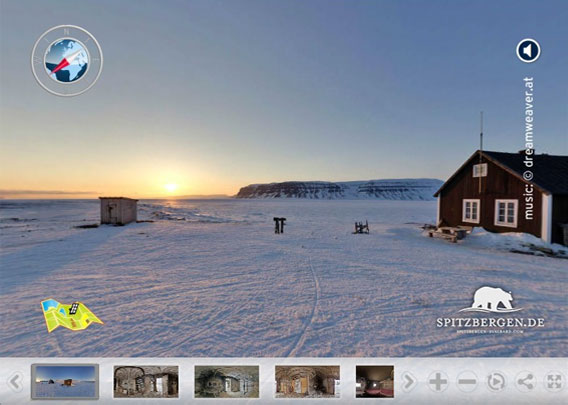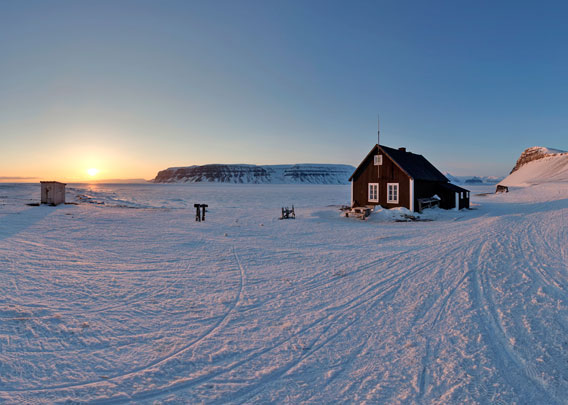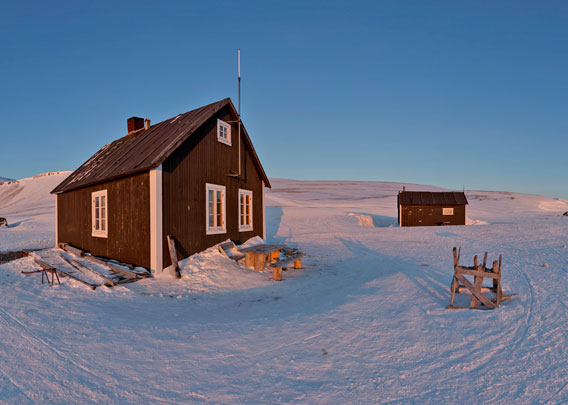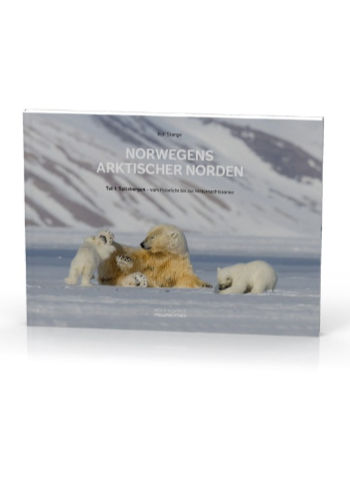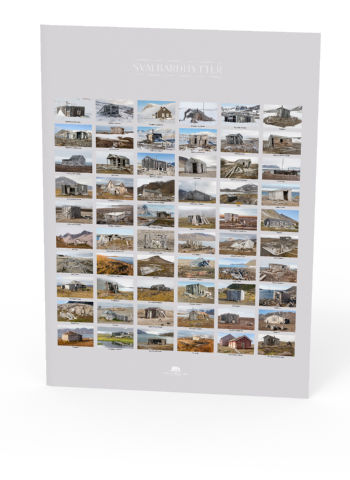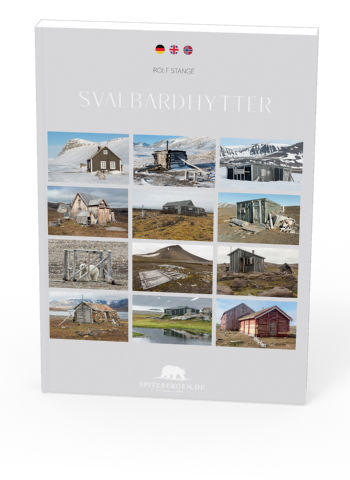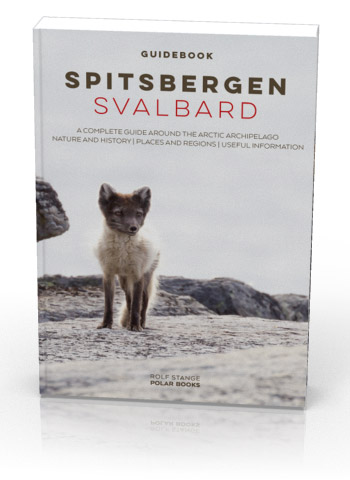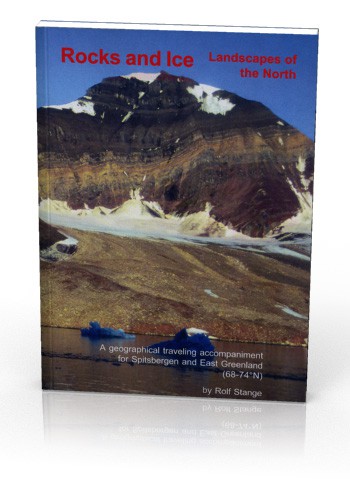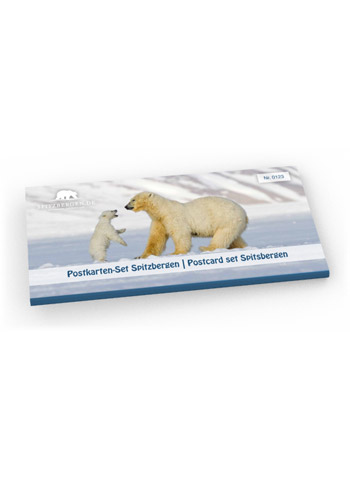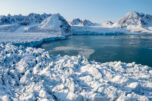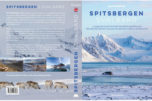-
current
recommendations- Liefdefjord
New page dedicated to one of Spitsbergen's most beautiful fjords. Background information and many photos.
- New Spitsbergen guidebook
The new edition of my Spitsbergen guidebook is out and available now!
- Liefdefjord
New page dedicated to one of Spitsbergen's most beautiful fjords. Background information and many photos.
Page Structure
-
Spitsbergen-News
- Select Month
- June 2025
- May 2025
- April 2025
- March 2025
- February 2025
- January 2025
- December 2024
- November 2024
- October 2024
- September 2024
- August 2024
- July 2024
- June 2024
- May 2024
- April 2024
- March 2024
- February 2024
- January 2024
- December 2023
- November 2023
- October 2023
- September 2023
- August 2023
- July 2023
- June 2023
- May 2023
- April 2023
- March 2023
- February 2023
- January 2023
- December 2022
- November 2022
- October 2022
- September 2022
- August 2022
- July 2022
- June 2022
- May 2022
- April 2022
- March 2022
- February 2022
- January 2022
- December 2021
- November 2021
- October 2021
- September 2021
- August 2021
- July 2021
- June 2021
- May 2021
- April 2021
- March 2021
- February 2021
- January 2021
- December 2020
- November 2020
- October 2020
- September 2020
- August 2020
- July 2020
- June 2020
- May 2020
- April 2020
- March 2020
- February 2020
- January 2020
- December 2019
- November 2019
- October 2019
- September 2019
- August 2019
- July 2019
- June 2019
- May 2019
- April 2019
- March 2019
- February 2019
- January 2019
- December 2018
- November 2018
- October 2018
- September 2018
- August 2018
- July 2018
- June 2018
- May 2018
- April 2018
- March 2018
- February 2018
- January 2018
- December 2017
- November 2017
- October 2017
- September 2017
- August 2017
- July 2017
- June 2017
- May 2017
- April 2017
- March 2017
- February 2017
- January 2017
- December 2016
- November 2016
- October 2016
- September 2016
- August 2016
- July 2016
- June 2016
- May 2016
- April 2016
- March 2016
- February 2016
- January 2016
- December 2015
- November 2015
- October 2015
- September 2015
- August 2015
- July 2015
- June 2015
- May 2015
- April 2015
- March 2015
- February 2015
- January 2015
- December 2014
- November 2014
- October 2014
- September 2014
- August 2014
- July 2014
- June 2014
- May 2014
- April 2014
- March 2014
- February 2014
- January 2014
- December 2013
- November 2013
- October 2013
- September 2013
- August 2013
- July 2013
- June 2013
- May 2013
- April 2013
- March 2013
- February 2013
- January 2013
- December 2012
- November 2012
- October 2012
- September 2012
- August 2012
- July 2012
- June 2012
- May 2012
- April 2012
- March 2012
- February 2012
- January 2012
- December 2011
- November 2011
- October 2011
- September 2011
- August 2011
- May 2011
- April 2011
- March 2011
- February 2011
- January 2011
- December 2010
- November 2010
- September 2010
- August 2010
- July 2010
- June 2010
- May 2010
- April 2010
- March 2010
- February 2010
- November 2009
- October 2009
- August 2009
- July 2009
- June 2009
- May 2009
- April 2009
- March 2009
- February 2009
- January 2009
- December 2008
- November 2008
- October 2008
- August 2008
- July 2008
- June 2008
- May 2008
- April 2008
- March 2008
- February 2008
- April 2000
- Select Month
-
weather information
-
Newsletter

| Guidebook: Spitsbergen-Svalbard |
Villa Fredheim (Tempelfjord)
Virtual tour of Hilmar Nøis' famous main hut
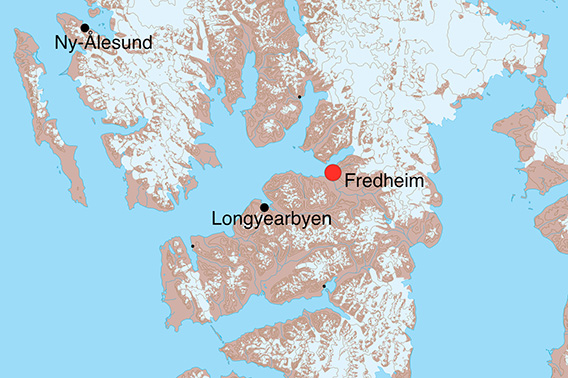
Fredheim is located in Tempelfjord.
Panoramas “Villa Fredheim” as a virtual tour/panoramic tour
- pano anchor link: #Fredheim
Hint
Once you have entered the virtual tour, you can either use the map in the lower left corner to navigate, or the bar at the bottom, or click on symbols within the panos to enter the next one (only while the next location is visible, not always available). Or you can just let it play and it will automatically switch to the next pano after one turnaround. You can switch the sound off (upper right corner) if you wish, same with the explanatory text.
You can also view this virtual tour on iPads and other tablets if they are powerful enough and have an up-to-date systems software.
Stations
- Danielsbu / Gammelhytta (outside)
- Danielsbu / Gammelhytta (1)
- Danielsbu / Gammelhytta (2)
- Fredheim: Nødhytta
- Fredheim: Nødhytta (1)
- Fredheim: Nødhytta (2)
- Villa Fredheim
- Villa Fredheim: Entrance
- Villa Fredheim: Kitchen
- Villa Fredheim: Living Room (1)
- Villa Fredheim: Living Room (2)
- Villa Fredheim: Stairs
- Fredheim: Upstairs (1)
- Fredheim: Upstairs (2)
- Fredheim: Upstairs (3)
Some additional information about the individual places:
Fredheim
„Villa“ Fredheim is a trapper hut that belonged to the famous Norwegian trapper Hilmar Nøis. Hilmar built Fredheim in 1924 and lived there for most of the time until 1963. During these years, he turned Fredheim from a primitive hut into a comfortable, cosy home. And indeed, Villa Fredheim is spacious, if not luxurious, compared to most other trapper huts in Spitsbergen. It has even got two floors! Most other trappers huts in Spitsbergen are certainly much smaller and less famous than the legendary Villa Fredheim.
Next to the main hut Villa Fredheim, there are two other, smaller huts. „Danielsbu“ (Daniel’s hut) is the oldest one, also called „Gammelhytta“ (old hut). Closer to the main hut, there is also „Nødhytta“ (emergency hut), serving as storage place and having a heatable room in case of emergency. In addition, there is even a small toilet house, in safe distance from the other buildings.
The site had been used by Pomors (Russian hunters) before the Norwegian trappers started coming to Spitsbergen, mainly from the 1890s. There were foundations of a Pomor hut visible on the shore shortly west of Fredheim, but the site was destroyed by coastal erosion, which is also threatening Fredheim. In 2015, the 3 huts were moved up to a higher, safer terrace, as they were threatened by coastal erosion in their original position.
Fredheim: Danielsbu or Gammelhytta (outside)
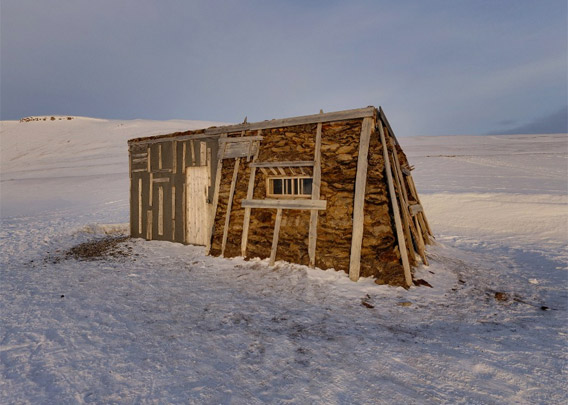
Gammelhytta is the oldest building at Fredheim. It was built in 1902 by Lars Gunnarsen Nisja, who wintered there subsequently. In 1911, it was overtaken by Daniel Nøis, who was Hilmar’s uncle. Daniel Nøis made improvements on the hut and it is accordingly often called Danielsbu. At times, most male members of the Nøis family from Vesterålen was involved in hunting and fishing in the Barents Sea. Daniel Nøis built this hut for a wintering in 1911/12. It is one of the best preserved examples in Spitsbergen for a trappers hut built in a traditional style, with outer walls insulated with peat and moss and a roof covered with the bark of birch trees.
Fredheim: Danielsbu or Gammelhytta (first Room)
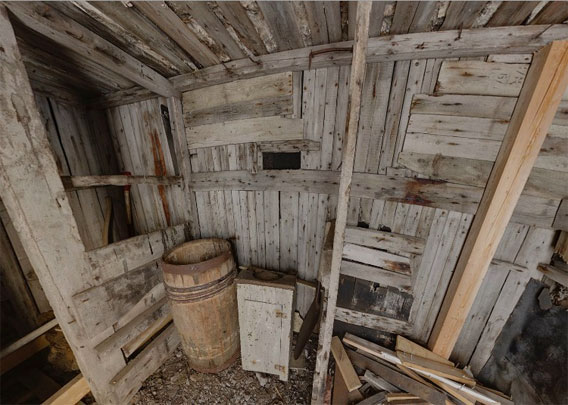
Instead of a wooden floor, there is a layer of gravel covering the ground in the first of the hut’s two rooms.
Hilmar Nøis used to live with his first wife Ellen Dorthe (born Johansen) in Danielsbu for some time. In autumn 1913, the couple got married in Norway, and a year later their daugher Embjørg was born. Shortly before birth, Hilmar, however, went to Spitsbergen for a wintering. For several years, the couple lived separate lives over most of the time, Ellen Dorthe in Norway and Hilmar in Spitsbergen, and they saw each other only during a short time in summer, until she joined him for her first wintering in Spitsbergen in 1921.
Fredheim: Danielsbu or Gammelhytta (second room)

Some say that Ellen gave birth to their second child on 11 June, 1922, a boy called Johannes Normann Kaps Nøis, in Danielsbu. But according to John-Eldar Pedersen who has done a lot of research on the Nøis family, the couple had moved to Bohemanneset earlier that spring so Kaps was born there. Anyway, Hilmar had gone to Longyearbyen to get the doctor, but they were too late: meanwhile, Ellen had given birth all on her own, without any help or support, in a primitive hut, alone in the arctic. This extreme experience was more than Ellen could handle, but she nevertheless returned for another winter together with Hilmar in Fredheim, but she left on the first possible occasion. The winter, especially the many days she had been alone in the hut, had been too much; it is said that Ellen never got entirely rid of the mental stress she had suffered during those two arctic winters. She got divorced from Hilmar soon after return. Her son Johannes Kap however wintered several times together with his father and worked in the coal mines in Spitsbergen.
Fredheim: Nødhytta
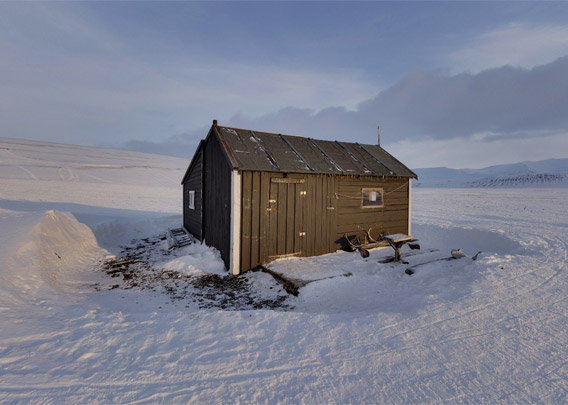
Nødhytta was built by Hilmar Nøis as storage and spare building in case of emergencies and has appearently never been used for any purpose beyond this. It is the only one of the three buildings at Fredheim which is not locked now.
Fredheim: Nødhytta, (front room)
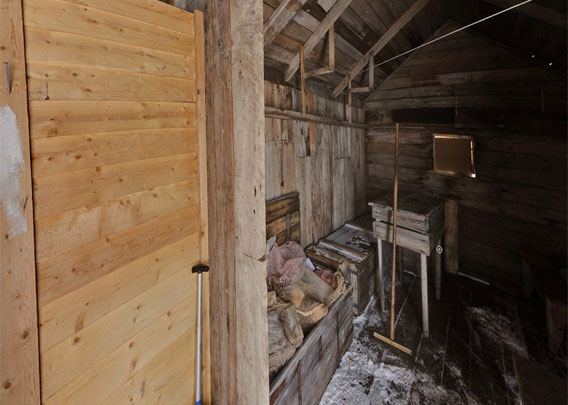
As the name suggests, „Nødhytta“ is an emergeny hut, where Hilmar would have found shelter in case of a fire of his main hut. This, however, never happened. The first room is unheated and served mainly as workshop and storage.
Fredheim: Nødhytta, (second room)
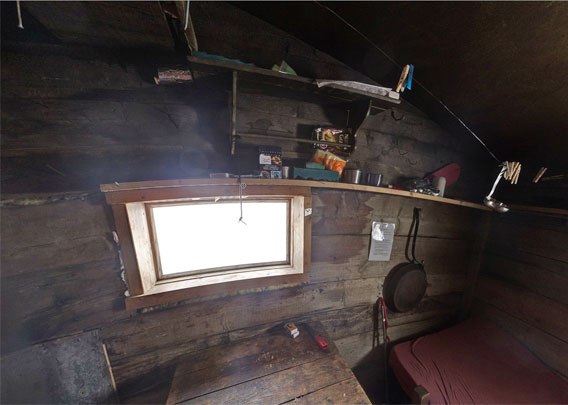
The second room of Fredheim’s Nødhytta is small and it has got a nice wood-burning stove, so it is easy to heat it up quickly.
Villa Fredheim
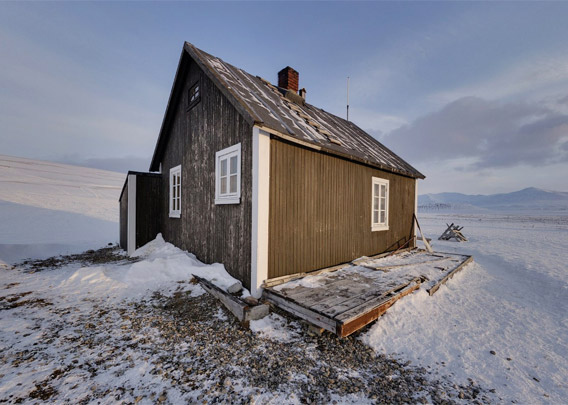
Villa Fredheim is the largest and most famous of the 3 buildings at Fredheim. It is one of the most beautiful and well-known trapper huts in Spitsbergen. Amongst others, it had an outside veranda on the side facing Tempelfjord. And there was even a little garden! Probably not with crane’s bill and tulips, but with local flowers such as saxifraga and Svalbard poppy.
Villa Fredheim: Entrance
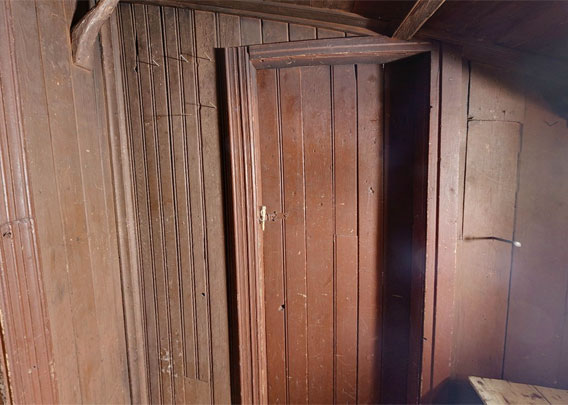
Every reasonable trapper hut had a small entrance room to keep wind and snow from blowing into the hut when the outer door was opened.
Villa Fredheim: Kitchen
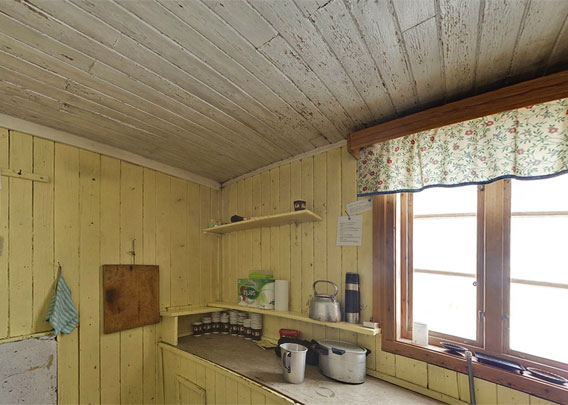
This is obviously where Hilmar Nøis and his wife Helfrid prepared their food. Guests were usually welcomed with fresh waffles or cake and glowing-hot coffee and they were always served the best Villa Fredheim had to offer. Tthat was certainly above local standards! In Hilmar’s days, a wood-burning stove was used for cooking; today, there is a gas cooker, as is usual in huts in Spitsbergen which are still being used.
Villa Fredheim: Living Room (1)
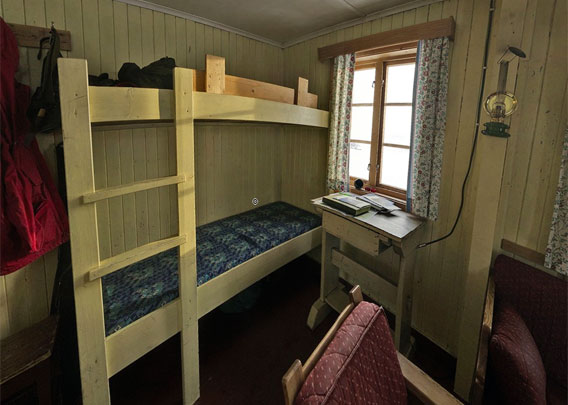
The first part of the living room, near the door to the kitchen. This used to be a separate, unheated room in the early days of Villa Fredheim. It was mostly the influence of Hilmar’s second wife Helfrid, starting in 1937, that made sure the place was gradually becoming more and more cosy, removing the separating wall to make this once separate room part of a bigger living room. Soon there would be a new stove and even gardins and carpets.
Villa Fredheim: Living Room (2)
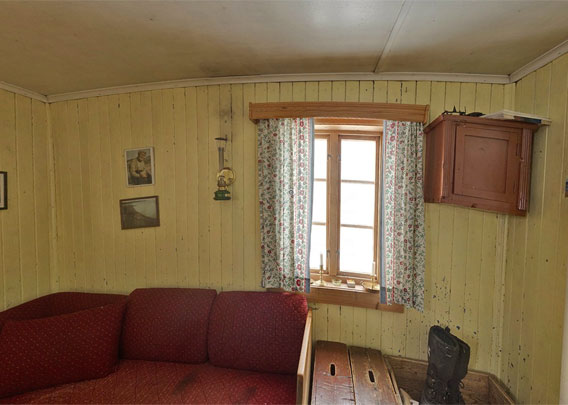
Hilmar and Helfrid met each others on a Hurtigruten ship (Norwegian coastal steamers) and were married on 22 August 1937 in Fredheim by the Sysselmannen. Story has it that Helfrid was informed about this arrangement one day in advance. Hilmar obviously had known about this a bit earlier, as he had even arranged wedding rings.
The inner part of the room is the original smaller living room. Hilmar and Helfrid lived most of their time here until they moved to Norway for good in the 1960s. Then, Hilmar could look back to an amazing 38 winterings in Spitsbergen! He died 1975 at the age of 84. Helfrid even got 96 years old, she died 1996 in Bodø.
Villa Fredheim: Stairs
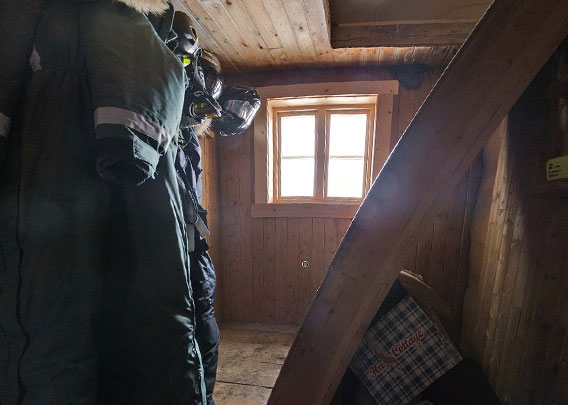
„Villa Fredheim” deserves the title villa amongst others because the house has got two floors, something that was very uncommon for a trapper’s hut. The lower end of the stairs was and still is being used for storage.
Fredheim: Top floor (1)
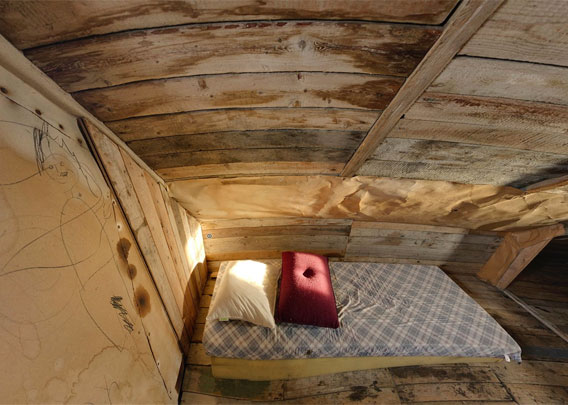
The first part of the top floor. Apart from a small lumber-room, it is all one room, a bit separated in two parts by the chimney. In the old years, tools and provisions were stored here. Today, there are matrasses for guests.
Fredheim: Top floor (2)
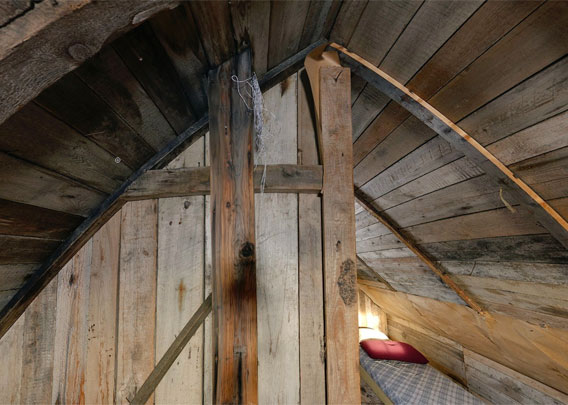
The middle part of the top floor. It is quite obvious what Fredheim is being used for today: it is no longer the lonely home of a hunter and his wife. Today, Fredheim is mostly empty, only used occasionally during weekends by a few privileged people and their friends.
Fredheim: Top floor (3)
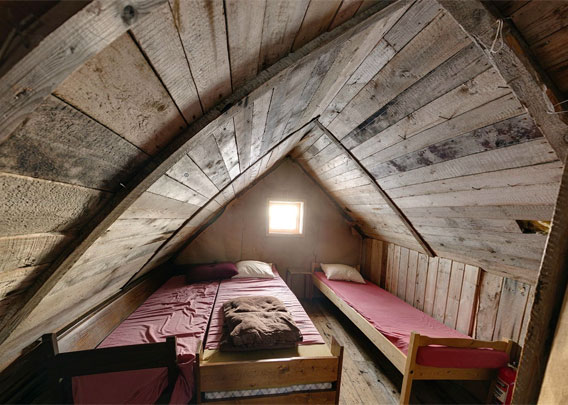
The far part of the top floor. Against old tradition in the arctic, there is now a lock on the door and the official seal of the Sysselmannen på Svalbard, the Norwegian governor. Many huts in Spitsbergen have been closed by the local authorities out of fear for damage. But how many have decayed and fallen apart because they were not used anymore and accordingly never heated and repaired? A lot, and it’s getting more every year. The authorities have only limited resources and cannot take care of all of these old, beautiful huts. There are individuals and clubs who have got resources, motivation and competence to take care of these huts, but usually there is no opportunity. In the case of Fredheim, the most prominent, it is given at Christmas and Eastern to locals from Longyearbyen who can apply for it, and during two weekends in late March and April, there is an open day where everybody can visit to have a look inside. The fact that the governor’s staff are able to use Fredheim for private purposes is controversial, to put it mildly, and it is doubtful if Hilmar Nøis would have agreed to this arrangement. He left it „to the people of Spitsbergen“ and not „to the Sysselmannen“.
Nevertheless I want to thank those friendly Sysselmannen staff who gave me the opportunity on 29 March 2014 to spend some time at the end of an open day, once everybody else had left, and shoot these panoramas! Now it is possible to visit Fredheim on the internet.
- pano anchor link: #Tempelfjord_09April13_427
In Tempelfjord, on the shore near Sassendalen, is Fredheim, home of the famous Norwegian trapper Hilmar Nøis, who lived there for several decades, in later years together with his second wife Helfrid. 1/2
- pano anchor link: #Tempelfjord_09April13_462
In Tempelfjord, on the shore near Sassendalen, is Fredheim, home of the famous Norwegian trapper Hilmar Nøis, who lived there for several decades, in later years together with his second wife Helfrid. 2/2
BOOKS, CALENDAR, POSTCARDS AND MORE
This and other publishing products of the Spitsbergen publishing house in the Spitsbergen-Shop.
last modification: 2025-02-23 ·
copyright: Rolf Stange
